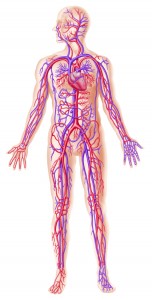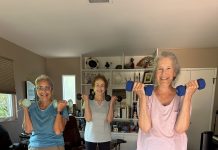 Like so many functions in the human body, veins go about their business unnoticed, defying gravity as they graciously bring used-up blood back to the heart.
Like so many functions in the human body, veins go about their business unnoticed, defying gravity as they graciously bring used-up blood back to the heart.
Equipped with valves to prevent reverse blood flow, veins perform work the majority of people give little mind until these translucent little vessels malfunction.
When filled with blood, they turn blue and can best be seen crisscrossing the arms and legs, hanging out relatively close underneath the skin.
It’s important to understand leg veins have no pumping action of their own, relying on the power of the calf muscles to pump the blood up the body, resetting each squeeze by closing their valves so blood doesn’t leak back down.
Dr. J. Joseph Hewett, founder of Pedes Orange County in Newport Beach, has created a new model for care delivery to patients with vascular disorders.
One of the easily spotted symptoms of venous insufficiency is varicose veins, an often painful condition where the veins become enlarged and twisted.
Dr. Hewett explains, “Varicose veins may seem to be a cosmetic problem, but they are a sign of a more significant malfunction.”
Peripheral venous disease is not something to take lightly. Pressure builds up after many years to cause those varicose veins, spider veins, and reticular veins which color the surrounding skin with a rust tint, a sort-of tattooing from the blood.
So what are the causes of the valves malfunctioning? Dr. Hewett relates that heredity, pregnancy, standing on feet for long periods of time, and blood clots in the leg are some of the reasons for veins to give out.
Also, females are more prone to this disease and it tends to run in families, especially Hispanics. If you have one first degree relative that has venous problems, there is a 60 percent chance you will too.
It usually begins with the main vein, the great saphenous vein that runs up the leg with smaller, peripheral veins branching out. Previously the treatment was to tear out the bad vein called vein stripping where the hospital stay could be a couple of days to a couple of weeks, with a recovery time of about six weeks.
These days a different procedure is used that takes only 45 minutes with an office stay of about 90 minutes. After the leg is numbed, a tiny incision is made, about ½” in diameter in the area of the vein, and a catheter is inserted using ultrasound as a guide. Then the vein is heated up with a laser that causes the vein to scar close. That’s it. The body reabsorbs the now defunct vein in six months.
Venous disease is more insidious than arterial disease with its slow, silent, progressive decline. And when symptoms appear such as varicose veins, leg swelling, leg pain, leg ulcers and changes in skin color, it becomes much harder to treat.
Early intervention is the key. Unfortunately venous disease is under-diagnosed so Pedes is offering free screenings during June and July. A quick test for a possible vein problem is conducted. This early detection enables a more proactive approach to vein health.
Contact Dr. Hewett and his staff at (949) 387-4724 or visit pedesorangecounty.com.




